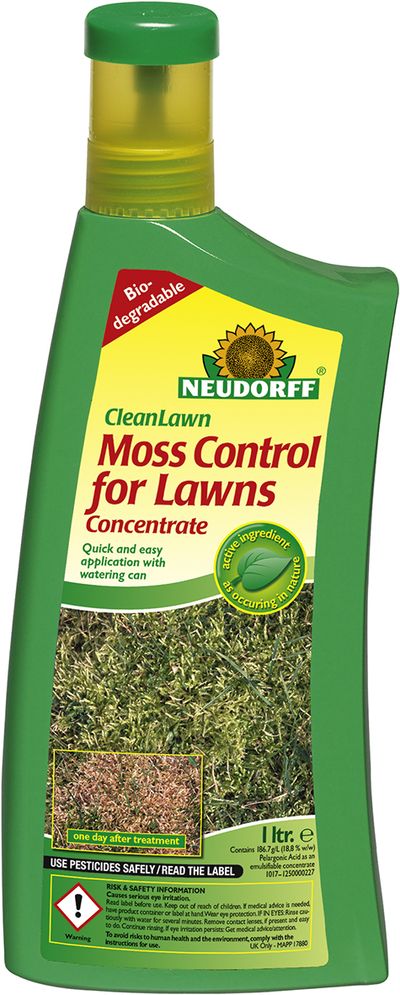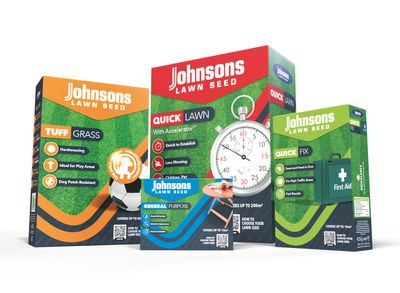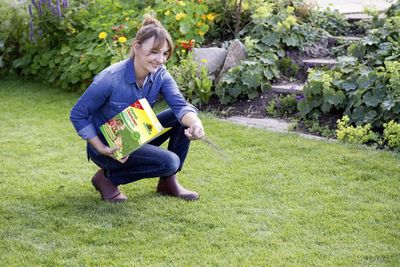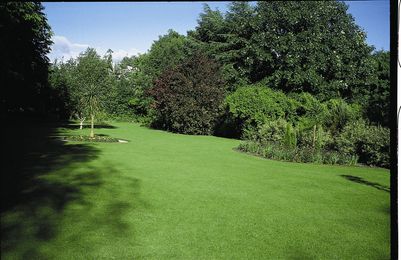Thatch is not just for roofs!
Published:
Read Time: 5 mins
The Experts at Johnsons Lawn Seed advise gardeners how to deal with thatch in their lawns
There’s nothing prettier than a traditional English country cottage with a closely-woven thatched roof, which never fails to conjure nostalgic images of summer romance in bygone ages. But what about when a dense layer of thatch has mysteriously found its way onto your lawn and run out of control? The specialists at Johnsons Lawn Seed explain how to deal with it.
Thatch, as the name suggests, is a tightly entangled layer of dead and decaying vegetation which can cause brown patches on lawns when deeply embedded, indicating an unbalanced pH. It does not develop from fallen leaves or the grass that’s left behind after mowing but tends to be a consequence of over-fertilisation.
Grass which grows as it should develops new roots, stems and leaves as the old plants die and a balanced turnover of die-off followed by new growth will ordinarily prevent thatch from forming. When new grass grows at a faster rate than the old can be destroyed, thatch builds up.
As well causing discolouration, thatch will typically give your lawn a spongy or springy feeling when you walk over it, due to the build-up of material beneath the surface. A thin layer of thatch can actually enhance the performance of your turf and far from indicating a lack of care, is more prevalent in lawns which receive a lot of maintenance, especially where treatments have been used which inhibit the ability of grass to decay naturally.
Too much thatch is a bad thing, however, so it shouldn’t be allowed to build up or it will become harder and harder to get rid of. Furthermore, whilst dry thatch repels water and can lead to a scorched appearance, mouldering wet thatch is an open invitation to fungal diseases (see our article on common crass diseases for more information). Heavy thatch will tie up the roots of your grass, making it more vulnerable to diseases, pests, drought or other weather extremes. In short, too much thatch means a weaker lawn.
Some varieties of grass are more prone to forming thatch than others, with bentgrass and smooth stalk meadow grass being far more liable to thatch than the ryegrasses or fescue which predominate in many of the Johnsons Lawn Seed mixes. More details at Gardening Know How:
Getting rid of lawn thatch takes several steps and a resolute gardener!
Solve the problem
Naturally occurring fungi will destroy thatch naturally, but if cultivated grass grows too quickly for the fungi to digest, what’s left behind then it can get out of balance. The most reliable way of controlling thatch is to correct the pH level of your lawn soil.
Some gardeners spray molasses diluted with warm water onto their lawns to stimulate the fungi and help them speed up the breakdown of old vegetation but raising the pH can also be achieved with an appropriate organic lawn feed such as Neudorff’s Organic CleanLawn. Follow with thorough watering to prevent soil being compacted, then some light dressing with topsoil or amended sands to encourage a higher rate of decomposition.
For large, out of control areas of thatch you’ll save yourself a lot of back pain and hours of labour by renting a scarifying machine from your local garden or DIY tool supply centre. Such a machine has steel blades or rigid wire teens which are able to cut through the dense impacted layers to the soil beneath, shredding the thatch along the way.
This might sound like fun but using a power-tool in this way can be very destructive and will probably remove no more than 30% of the thatch, whilst failing to solve what’s causing it to accumulate in the first place. Doing the job by hand, whilst much less harsh, can be back-breaking work if you’ve got a big lawn or other grassy area to fix. If the task is so big as to be daunting and you don’t want to carve up your lawn with machinery, take the longer road by consistently aerate lawns that tend to get covered in thatch each year, then limit how much you feed and water the grass to help prevent thatch building up.
Whether it’s power to the tool or power to the hand, the time to do this is in late spring or early autumn rather than the height of summer, when your lawn might be getting tired or stressed from periods of drought or heavy usage. Nor should you try to de-thatch when the grass is wet. Scarification should be combined with proper fertilisation and watering to ensure your lawn recovers from the onslaught of machinery.
When you do manage to successfully deal with thatch, you may find that your lawn is in need of some replenishment. Overseeding is the way forward here, see our step-by-step guide to lawn repair by overseeding for full details.
The Johnsons Lawn Seed portfolio
· Tuffgrass with Dog Patch Resistance not only protects lawns against ugly patches caused by canine urine, but also has excellent drought-resistance and stands up well to low temperatures and snow.
· Quick Lawn with Accelerator-treated seed offers rapid germination and fast establishment whilst needing just a third of the amount of water that’s usually required to get new lawns going.
· Luxury Lawn is a traditional mix designed to be mown close while retaining a lush, high-class appearance with excellent drought-resistance.
· After Moss Lawn Seed is coated in a special calcium carbonate-based shell that gently raises the pH level of the soil to help deter the return of moss.
· Lawn Thickener Lawn Seed with SeedBooster well help you transform tired lawns, fix patches, sow new lawns and benefit from 30% more grass with this latest seed technology.
· Last but not least, Shady Place Lawn Seed is ideal for semi and relatively shaded areas, thriving in either damp or dry shade.
Find out more
To find out more about Johnsons Lawn Seed products please visit http://www.johnsonslawnseed.com/product-range.aspx
Ends
Editors notes
Established in 1820 Johnsons Lawn Seed is the oldest lawn seed brand in the UK with a long and prestigious record of product innovation and grass breeding.






